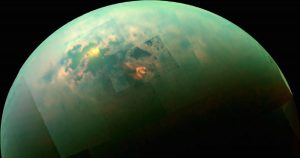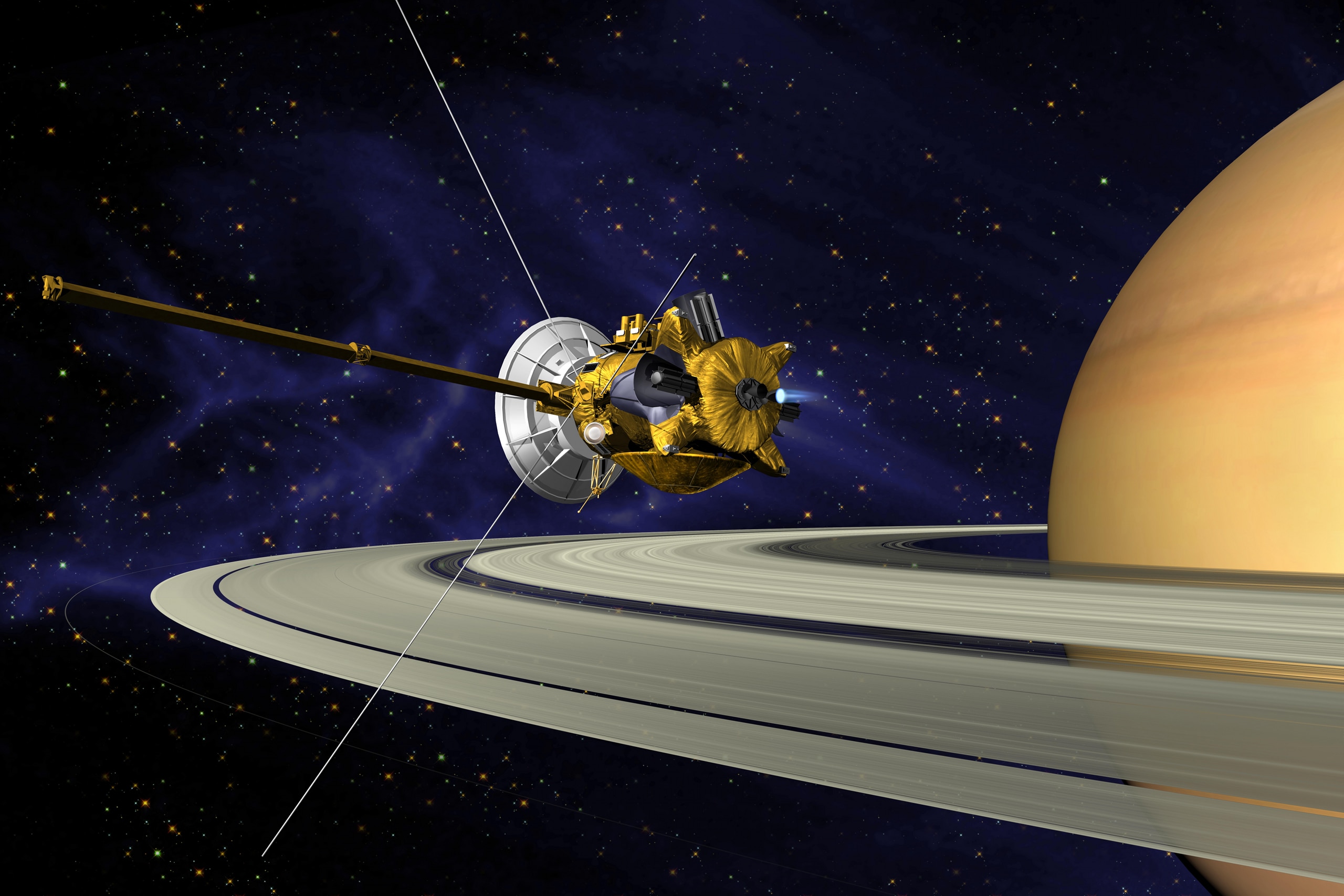
Vital Molecules Found On Saturn’s Moon, Scientists Claim ‘They’re Key Building Blocks Of Life’
The origins of Human beings have always been a subject of curiosity for many scientists. With various theories on the table, there’s yet no conformity regarding the truest process behind the birth of the first human.
Now, that after the successful Cassini Mission in which the features of the Saturn are studies, several results are obtained that might rope in new conclusions and mind boggling theories. In this process, an important building block of life has been discovered in the hazy upper atmosphere of Saturn’s largest moon Titan, by a team led by an Indian-origin researcher.
Interpreting the data available from the Cassini mission, scientists, including those from UK’s University College London identified negatively charged molecules called ‘carbon chain anions’ in the atmosphere of Titan. Scientists believe that these linear molecules are understood to be building blocks towards more complex molecules, and may have acted as the basis for the earliest forms of life on our planet.
Eccentric to all the particles that are earlier discovered, these Carbon chain atoms are highly reactive and should not last long in Titan’s atmosphere before combining with other materials, it is completely reshaping current understanding of the hazy moon’s atmosphere, said the researchers.
With the detections made using Cassini spacecraft’s plasma spectrometer, called CAPS, as it flew through Titan’s upper atmosphere, 950-1,300 kilometer above the surface, the data shows that the carbon chains become depleted closer to the moon, while precursors to larger aerosol molecules undergo rapid growth in time.
Ravi Desai, lead author of the study published in the Astrophysical Journal Letters, said, “We have made the first unambiguous identification of carbon chain anions in a planet-like atmosphere, which we believe is a vital stepping-stone in the production line of growing bigger, and more complex organic molecules, such as the moon’s large haze particles.”
This suggests a close relationship between the two, with the carbon chains ‘seeding’ the larger molecules that are thought to fall down to, and deposit on, the surface.

Later, Desai, also being a Ph.D. student from UCL,was quoted saying, “This is a known process in the interstellar medium – the large molecular clouds from which stars themselves form – but now we have seen it in a completely different environment, meaning it could represent a universal process for producing complex organic molecules the question is, could it also be happening at other nitrogen-methane atmospheres like at Pluto or Triton, or at exoplanets with similar properties ?”.
Saturn’s moon, Titan, boasts a thick nitrogen and methane atmosphere with some of the most complex chemistry seen in the solar system. It is even thought to mimic the atmosphere of early Earth, before the build-up of oxygen. In that fashion, Titan can be seen as a planet-scale laboratory that can be studied to understand the chemical reactions that may have led to life on Earth, and that could be occurring on planets around other stars.
Andrew Coates, a professor from UCL and co-investigator of CAPS, said, “The prospect of a universal pathway towards the ingredients for life has implications for what we should look for in the search for life in the universe, Titan presents a local example of exciting and exotic chemistry, from which we have much to learn.”
Sources claim that in the Titan’s upper atmosphere, nitrogen and methane are exposed to energy from sunlight and energetic particles in Saturn’s magnetosphere, and these energy sources drive reactions involving nitrogen, hydrogen, and carbon, which lead to more complicated pre biotic compounds substantially.
By the end, these large molecules drift down towards the lower atmosphere, forming a thick haze of organic aerosols, and are thought to reach the surface eventually.
Related Article: Cassini’s Mission Now Reaches New Milestone As ‘Solstice’ Arrives At Saturn